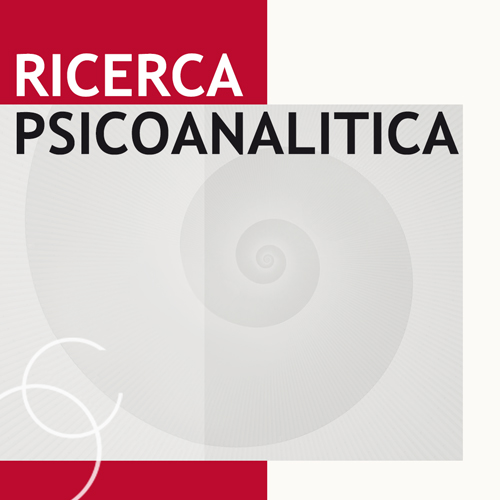The school as a place for a ‘social clinic’ (PolisAnalysis)

All claims expressed in this article are solely those of the authors and do not necessarily represent those of their affiliated organizations, or those of the publisher, the editors and the reviewers. Any product that may be evaluated in this article or claim that may be made by its manufacturer is not guaranteed or endorsed by the publisher.
The school has remained the only incubator of semiotic capital - resources of meaning - and regenerator of social capital. Therefore, the task of the teacher-educator is primarily to ‘teach how to live’, i.e. to allow each individual to develop knowledge of himself and the link with others - others within himself and others outside himself - to prepare them to face the multiple uncertainties and difficulties of existence, coping with the sense of radical impotence and indefinability of the Self experienced by the ‘sovereign child’ who has now grown up. Central to this, will be a re-education as regards limits, mentalisation, caring for the common living space. To this end, even the learning-teaching process should be interpreted as something concerning above all the emotional-affective dynamics, largely unconscious, that configure the group network of relationships between all the actors on the school’s stage: transference, countertransference, collusions, the class-group as a single mind, the institution, the specific culture of each school. The teacher will be able to find in his own mind his main working tool, provided he has space and time to conscientise and metabolise what is acting in himself at an unconscious level, through appropriate group methodologies - Balint and Psychodrama. The student, on the other hand, will be helped to transition from a culture of fulfilment to feeling like a ‘client’ who experiences school as a time to cultivate himself and implement Relational Assets, such as reciprocity, cooperation and trust. It is about operating a real act as a ‘social clinic’.
Ammaniti, N. (2015). La famiglia adolescente. Laterza: Roma-Bari.
Ancona, L., Giordano, M., Guerra, G., Patella, A., & Von Platen, A. (2003). Antipigmalione. Gruppoanalisi e rivoluzione formativa. FrancoAngeli: Milano.
Bion, W. (1963). Elementi di psicanalisi. Armando: Roma.
Bion, W. (1970). Attention and interpretation. London: Karnac.
Brazelton, B. & Greenspan, S. (2000). I bisogni irrinunciabili dei bambini. Ciò che un bambino deve avere per crescere ed imparare. Cortina: Milano.
Cahn, R. (2000). L’adolescente nella psicanalisi. Borla: Roma.
Cahn, R. (2000). L’adolescente nella psicoanalisi: l’avventura della soggettivazione. Borla: Roma.
Carli, R. (2008). Culture giovanili. Proposte per un intervento psicologico nella scuola. FrancoAngeli: Milano.
Donati, P. (2019). Scoprire i beni relazionali. Per generare una nuova socialità. Rubettino Editore: Catanzaro.
Ekstein, R. (1970) L’influsso della psicanalisi sull’educazione e l’insegnamento, in G. Ammon (a cura di) (1973). Pedagogia e psicanalisi, trad. it. Firenze-Rimini, Guaraldi 1975, 19-45.
Fornari, F. (1981). Il codice vivente. Boringhieri: Torino.
Freud, S. (1912). Nota sull’inconscio in psicanalisi. Boringhieri: Torino.
Freud, S. (1913). La disposizione alla nevrosi ossessiva. Contributo al problema della scelta nella nevrosi. Opere, 7. Boringhieri: Torino.
Freud, S. (1914). Introduzione al narcisismo. Boringhieri: Torino.
Freud, S. (1991). I due principi dell’accadere psichico. Boringhieri: Milano.
Han, B. C. (2017). L’espulsione dell’altro. Nottetempo: Milano.
Hillman, J. (1988). Revisione della psicologia. Adelphi: Milano.
Jung, C. G. (1928). Sviluppo ed educazione del bambino, Opere, 17. Boringhieri, Torino, 1996.
Jung, C. G. (1939). Coscienza, inconscio e individuazione. Bollati Boringhieri: Torino.
Marcelli, D. (2004). Il bambino sovrano. Raffaello Cortina: Milano.
Mitchell, S. A. (1988). Relational concepts in psychoanalysis: An integration. Harvard University Press. DOI: https://doi.org/10.4159/9780674041158
Morin, E. (1933). Terra-Patria. Cortina: Milano.
Morin, E. (2014). Insegnare a vivere. Manifesto per cambiare l’educazione. Cortina: Milano.
Napolitani, D. (1987). Individualità e Gruppalità. Ipoc: Milano.
Pergola, F. (2020). Un insegnante quasi perfetto. FrancoAngeli: Milano.
Salvatore, S. (2012). Social life of the sign: Sense-making. The Oxford handbook of culture and psychology, 241-254. DOI: https://doi.org/10.1093/oxfordhb/9780195396430.013.0012
Salvatore, S. (2018). Cultural psychology as the science of sensemaking: a semiotic-cultural framework for psychology. The Cambridge handbook of sociocultural psychology. Cambridge University Press, Cambridge, 35-48. DOI: https://doi.org/10.1017/9781316662229.003
Winnicott, D. W. (1947).’L’odio nel controtransfert.’ Dalla pediatria alla psicoanalisi, 234-245.
Winnicott, D. W. (1960). ‘La distorsione dell’Io in rapporto al vero e al Falso Sé’, Sviluppo affettivo e ambiente. Armando: Roma.
Winnicott, D. W. (1971). Gioco e realtà. Armando: Roma.
Zoja, L. (2009). La morte del prossimo. Einaudi: Torino.
Copyright (c) 2022 the Author(s)

This work is licensed under a Creative Commons Attribution-NonCommercial 4.0 International License.
PAGEPress has chosen to apply the Creative Commons Attribution NonCommercial 4.0 International License (CC BY-NC 4.0) to all manuscripts to be published.


 https://doi.org/10.4081/rp.2022.606
https://doi.org/10.4081/rp.2022.606





